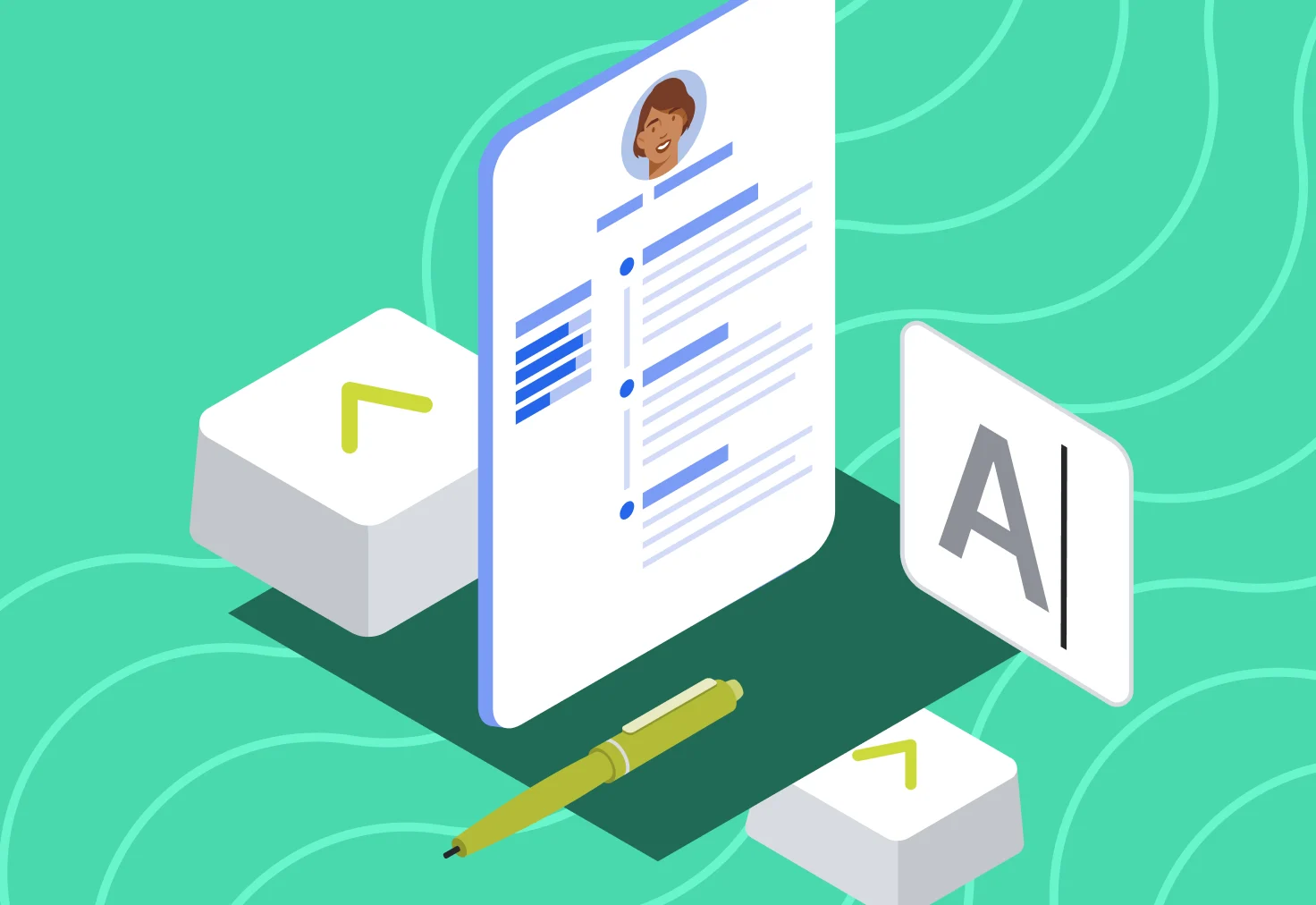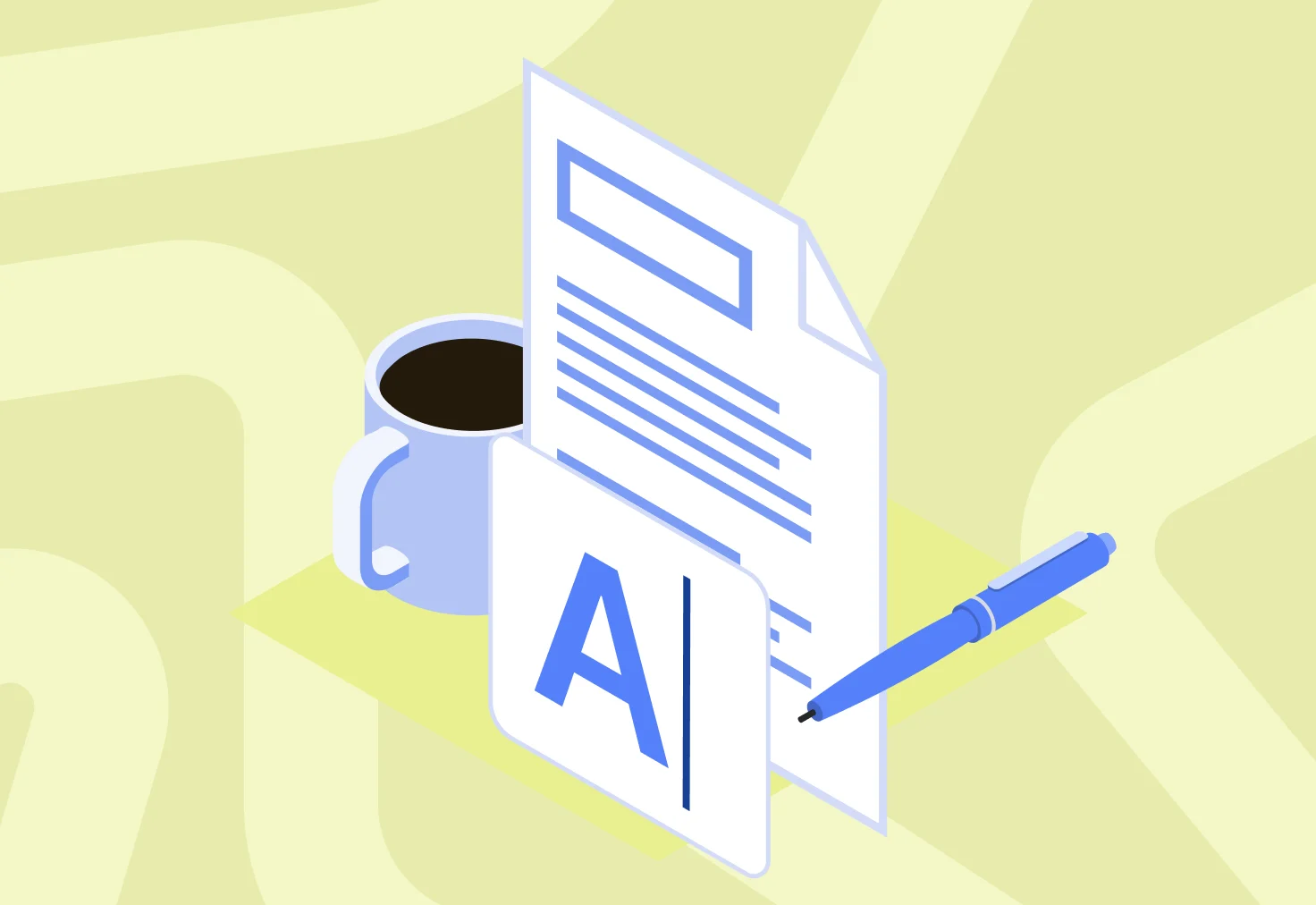Are you struggling to craft the perfect interior design resume?
Don’t worry; we’ve all been there. It’s like trying to find the perfect shade of white paint. The options are endless, and it’s easy to get lost in the sea of choices.
However, once you pick the correct color, you can transform an ordinary room into a well-designed one. The same goes for your resume.
So, let’s roll up our sleeves, grab our color swatches, pens, and papers, and get to work making a creative interior design resume that’ll make your potential employers say, “Wow, this is the one!”
Key Takeaways
Combine a practical format (e.g., the chronological format) with a visually appealing layout (e.g., a legible font and enough white space) for the best effect.
Make sure to include a link to your personal website, portfolio, or work-related social media profile in your contact information section.
Your work experience and skills should be relevant to the job that you’re applying for.
You should go the extra mile and submit a personalized cover letter—you can use it as an extension for your resume to further highlight your competence.
What is the Right Format to Use for an Interior Design Resume?

Aesthetics and organization. That's what interior design is all about, right? So, that's what you want for your resume as well. Speaking of that, you'll have the best chances of success by using one of the recognized resume formats.
The chronological resume format is the most popular, as it gives hiring managers insight into your professional and academic development. This format puts your latest achievements first before listing the rest from there. That systematic ordering of information makes it favored by recruiters as well as a safe pick for ATS purposes.
If you’re new to the field of interior design, you can opt for the functional resume format. Its goal is to shift focus from your modest professional experience to your highly valuable skills.
Lastly, interior designers who have tons of experience can take advantage of the combination resume format. It blends chronological and functional formats to emphasize your strongest skills and showcase work-related achievements obtained due to those skills.
Resume Layout

A resume layout deals with the aesthetic aspect of resume crafting. To create a pleasant and engaging experience for those who will read it, you should consider the following guidelines:
Resume Layout Guidelines
Unless you’re an industry veteran, your resume should be one page long.
To fit a lot of information in such a limited space, you should use bullet lists instead of blocks of text.
Boost the readability of your interior design resume by using a professional font like Cambria or Helvetica.
Make different sections distinct by making the title font size 14–16 pt, with regular text being 10–12 pt.
Combine 1-inch margins on all sides with plenty of white space to further increase the legibility of your resume.
What Sections Should an Interior Design Resume Contain?

Mandatory Sections
Before you can get creative with your interior design, we should establish some ground rules. There are certain sections that are must-haves, and they are:
Contact information
Resume objective or summary
Work experience
Education
Skills
Optional Sections
These sections are what every recruiter wants to see. After listing them, you can add some optional parts to spice up your resume. Optional sections include:
Awards and certifications
Professional memberships
Hobbies and interests
Being an interior designer, you likely can’t wait to get creative with your resume. But may we suggest you try out our resume builder?
It gives you all the freedom you need to change and adjust every aspect of your resume while featuring intuitive controls and a streamlined design process. Change colors, switch fonts, or make complete overhauls in seconds. Then fill in the blanks with your details, and you’re good to go!
Here’s a free interior design resume template to demonstrate the capabilities of our resume-building tool.
Interior Design Resume Template
Name and Surname
Phone number: 000-000-0000 | Email: namesurname@gmail.com | Location: City, State
[Adjective] [your job title] with [years of experience, if applicable] in [your area of expertise, if applicable] looking for a [position] job at [company name]. Eager to apply [relevant skills] gained through [work/volunteer/other experience] to help [company name] [mention what you can do for the company].
Work Experience
Most Recent/Current Job Title Company City, State [Start date] — [End date]
For recent jobs, use 5-6 bullet points to list your top achievements and responsibilities
Use action verbs to make your responsibilities and achievements stand out
Add numbers to quantify your achievements
Previous Job Title Company City, State [Start date] — [End date]
For recent jobs, use 5-6 bullet points to list your top achievements and responsibilities
Use action verbs to make your responsibilities and achievements stand out
Add numbers to quantify your achievements
Oldest Job Title Company City, State [Start date] — [End date]
For older jobs, use 2-3 bullet points to list your top achievements and responsibilities
Use action verbs to make your responsibilities and achievements stand out
Add numbers to quantify your achievements
Education
[Degree] in [Major] [University/college name] [Start date] - [Graduation date]
Skills
Soft Skills
Skill #1
Skill #2
Skill #3
Skill #4
Skill #5
Hard Skills
Skill #1
Skill #2
Skill #3
Skill #4
Skill #5
Additional Sections
Add any relevant additional sections (languages, licenses, publications, hobbies, etc.)
Resume templates
Resume templates that are designed to help you win a jobInterior Design Resume Contact Information

There’s not a lot of creativity involved when it comes to adding your contact information to your resume, which is a good thing. You just put it in your resume header and move on. The details to include are:
Header Mandatory Details
Your name
Job title
Phone number
Professional email address
Then there are optional but rather important parts, such as:
Header Optional Details
Portfolio
LinkedIn profile
Personal website
Relevant social media accounts
Let’s see that in an example:
Contact Information Example
Nellie Evans
Interior Designer
+ 312 633 8842
nellieevans@example.com
linkedin.com/in/nellieevans99
nellieevansportfolio.com
instagram.com/nelliedesign123
The most important thing about this section is to keep it professional and accurate. You don’t want a single mistyped letter that would invalidate your contact details.
Additionally, all the information should be relevant to the position that you’re applying for. A personal social media page that’s not about your work as an interior designer shouldn’t be listed on your resume.
Interior Design Resume Objective or Summary

A resume objective or summary generally goes next to your contact information—to the resume header. It’s a concise and informative two- to four-sentence paragraph that should highlight your key strengths. The goal is to grab recruiters’ attention and get them to read the rest of your resume.
The difference between the two is that a resume objective should be written by entry-level candidates who want to focus on their skills over their experience. A resume summary aims to put your most valuable accomplishments front and center, which is why it’s best for experienced interior designers.
Interior Design Resume Objective

A strong interior design resume objective is specific and gives potential employers a clear insight into the candidate’s skill set. It should also show drive and passion and portray you as someone with great potential.
Here’s a good example:
Good Example
“Dedicated recent graduate with a degree in interior design seeking an entry-level position in [your company]. Proficiency in design principles, space planning, and color theory. Adept at using AutoCAD, SketchUp, and the Adobe Creative Suite. Eager to combine passion for design with technical expertise to successfully fill the position of an interior designer.”
Just for comparison, here’s what a bad resume objective looks like:
Bad Example
“Inexperienced interior designer looking to join your company to learn and grow within the industry.”
The focus of this objective is on what the candidate stands to gain from the job when it should be about what they can bring to the company.
Interior Design Resume Summary

A good interior design resume summary gives recruiters a taste of what you’re capable of, persuading them to keep reading to find out more about you.
Let’s check out an example:
Good Example
“Accomplished interior designer with more than 10 years of experience working with a range of high-profile clients. Led and managed 100+ projects, totaling over $11 million in value. Adept at all aspects of design, from conception, procurement, and installation, to completion. Seeking to join [your company] to leverage a focus on client satisfaction with a passion for perfection.”
And here’s a poorly written resume summary:
Bad Example
“Senior interior designer with lots of experience looking for new challenges.”
This resume summary is as generic as it gets, and recruiters won’t be able to extract any information of substance from it.
Interior Design Resume Work Experience

Past work experience is one of the strongest indicators of future performance. That’s why recruiters and potential employers often pay the most attention to the work experience section of your interior design resume.
General Tips
The basic parts of any work experience section are:
Your role
Company name and location
Start and end dates of employment
Responsibilities and achievements
For starters, you should focus on previous jobs that are relevant to the position that you’re applying for. Since you’re going for an interior designer role, your part-time gig bartending years ago probably isn’t relevant.
Moreover, you want to concentrate on prominent achievements and palpable results over everyday tasks. Show something that makes you stand out among the competition.
To achieve that, you can start by using concise but information-packed bullet lists. Each one should feature something notable from your previous job.
You can use numbers and statistics to highlight results and make them concrete. Additionally, memorable action verbs can make this section (and your whole resume) prominent.
No Interior Design Experience

If you’re trying to break into the industry, you likely don’t have much—if any—professional history. So, if you’re writing an interior design resume with no experience, it’s perfectly fine to use substitute activities and endeavors, such as internships, volunteer work, freelance work, personal projects, and similar.
Let’s examine a good example of an entry-level interior designer showcasing their internship:
Interior Designer Intern
Work Experience
Interior Designer Intern
Studio Fenster
Columbus, OH
August 2022–January 2023
Collaborated with senior designers and cross-functional teams to develop design concepts and execute 7 projects.
Utilized AutoCAD, SketchUp, 3dsMax, V-Ray, and Adobe Photoshop to create designs and presentations.
Conducted research on materials, finishes, and furniture options to assist senior designers in finding the best ones.
Experienced Interior Designer

When you’re applying for a senior position, “ordinary” achievements that every interior designer could obtain usually won’t be enough. Instead, you should focus on those accomplishments that demonstrate your seniority and show that you’re capable of doing tasks that not many are able to.
Let’s see that in an example:
Senior Interior Designer
Work Experience
Senior Interior Designer
Bright Space Studio
Riverside, CA
April 2019–Current
Designed and executed a large-scale hospitality project that received industry recognition and boosted the client’s revenue by 27%.
Developed and maintained strong relationships with clients, resulting in a 20% increase in repeat business.
Mentored and managed 10 junior designers, helping them develop their skills, learn industry standards, and work in a collaborative environment.
Interior Design Resume Education Section

After listing your professional history, you should show your academic one as well. While adding your bachelor’s degree to your resume is generally enough, you can still put in a bit of effort to make this section shine. That’s all the more important if you’re an entry-level candidate who lacks work experience.
For starters, the education section of your interior design resume should feature the following:
Your degree
The school that issued it
Years of attendance
(Optional) Notable achievements
In practice, that would look like this:
Education Section Example
Education
BA in Interior Design
Thomas Jefferson University, Philadelphia, PA
2016–2020
Relevant coursework: Interior Design History, Textiles and Fabrics, Lighting Design, Space Planning, Materials and Finishes, Environmental Psychology
In addition to relevant coursework, you can also include a high GPA (3.5 and above), extracurricular activities, volunteer work, abroad studies, and more.
Interior Design Resume Skills

As an interior designer, you’re a multi-talented, multi-skilled individual with vast knowledge in various fields. However, it’s usually not the best practice to cram all of your skills into your interior design resume.
You probably noticed how the overarching theme for resume-building so far has been relevance. The same goes for your skills.
Before you start adding soft and hard skills to your resume, you should do your research. Look into the company and thoroughly examine the job ad to figure out which abilities the recruiters and potential employers are interested in. Then, create a list and add it to the skills section.
Once you’ve done that, consider mentioning some of your skills throughout your resume. What you want to do is demonstrate them through examples of work-related achievements and results obtained.
Put some skills next to relevant accomplishments in your work experience section and include a few in your resume summary or resume objective. That will add weight to your skill set and make it credible.
Hard Skills
Hard skills are highly technical and specific to your profession. There are many that you could add to your resume, including:
AutoCAD
Adobe Suite
Sketching
Budgeting
Color theory proficiency
Project management
On-site consultations
Soft Skills
Soft skills affect your productivity and interpersonal relationships. They aren’t specific to the job of an interior designer but are nevertheless highly desired by recruiters. Here are some soft skills to add to your resume:
Creativity
Communication
Problem-solving
Attention to detail
Time management
Listening
Flexibility
Interior Design Resume Optional Sections

Optional sections allow you to fine-tune your resume and make it stand out among other candidates.
Awards & Certifications
Including some notable awards and certifications in your resume is one of the best ways to add trustworthiness to your competence. Awards demonstrate your professional excellence and the respect your peers have for your exceptional abilities. On the other hand, certifications add value to your education and show that you have specific knowledge in particular fields.
Professional Memberships
Being a member of a professional association shows that you network with other interior designers, stay up-to-date with industry trends and standards, which helps enhance your credentials. Some of these associations are:
International Interior Design Association (IIDA)
Interior Design Society (IDS)
Hobbies & Interests
As an interior designer, you'll likely do your best to make your document stand out both visually and content-wise. However, chances are that every other candidate will try to do that as well.
So, do you emerge from the crowd?
The answer is—by including the often-overlooked section about your hobbies and interests. Show recruiters and potential employers who the real you is, and you'll become much more than just another person behind a resume.
Should You Submit a Cover Letter With Your Interior Design Resume?

Cover letter templates
Create a cover letter by filling in a free template and sharing it for freeMany candidates consider a cover letter optional, so they don’t write it. That puts those who submit a position-specific cover letter that matches their resume instantly ahead of the competition.
Not only do you get to showcase your eagerness to go the extra mile to get the job, but you also get additional 3–5 paragraphs to go more in-depth about your skills and achievements.
Expert Tips for Creating an Interior Design Resume
Before we wrap things up, here are some final expert tips that will help you get the most out of your interior design resume:
It’s recommended to submit your interior design resume as PDF to preserve its formatting unless the job ad states otherwise.
If you don’t have plenty of work experience, focus on your education section—list relevant courses, certifications, and even school projects.
Having a personal website is a great way to show off your work. Still, if you don't have one yet, you can use substitutes such as Dribbble, Pinterest, or even Instagram.
You want to make sure that your resume is impeccable, with no errors or spelling mistakes. In addition to proofreading it carefully, you can ask someone else to give it another look.
Before you start designing your resume, here are some examples for inspiration.
Closing Thoughts
As an interior designer, you’re used to creating beautiful spaces that are both functional and stylish. The good news is—you can simply apply the same principles to creating your resume. Make it visually appealing, easy to read, and, most importantly, reflective of your unique skills and qualifications.
Remember to keep your interior design resume polished and professional, but don’t be afraid to let your personality shine through. With a bit of careful planning, a touch of creativity, and enough attention to detail, you’ll create a standout document that will impress potential employers. Happy designing!


